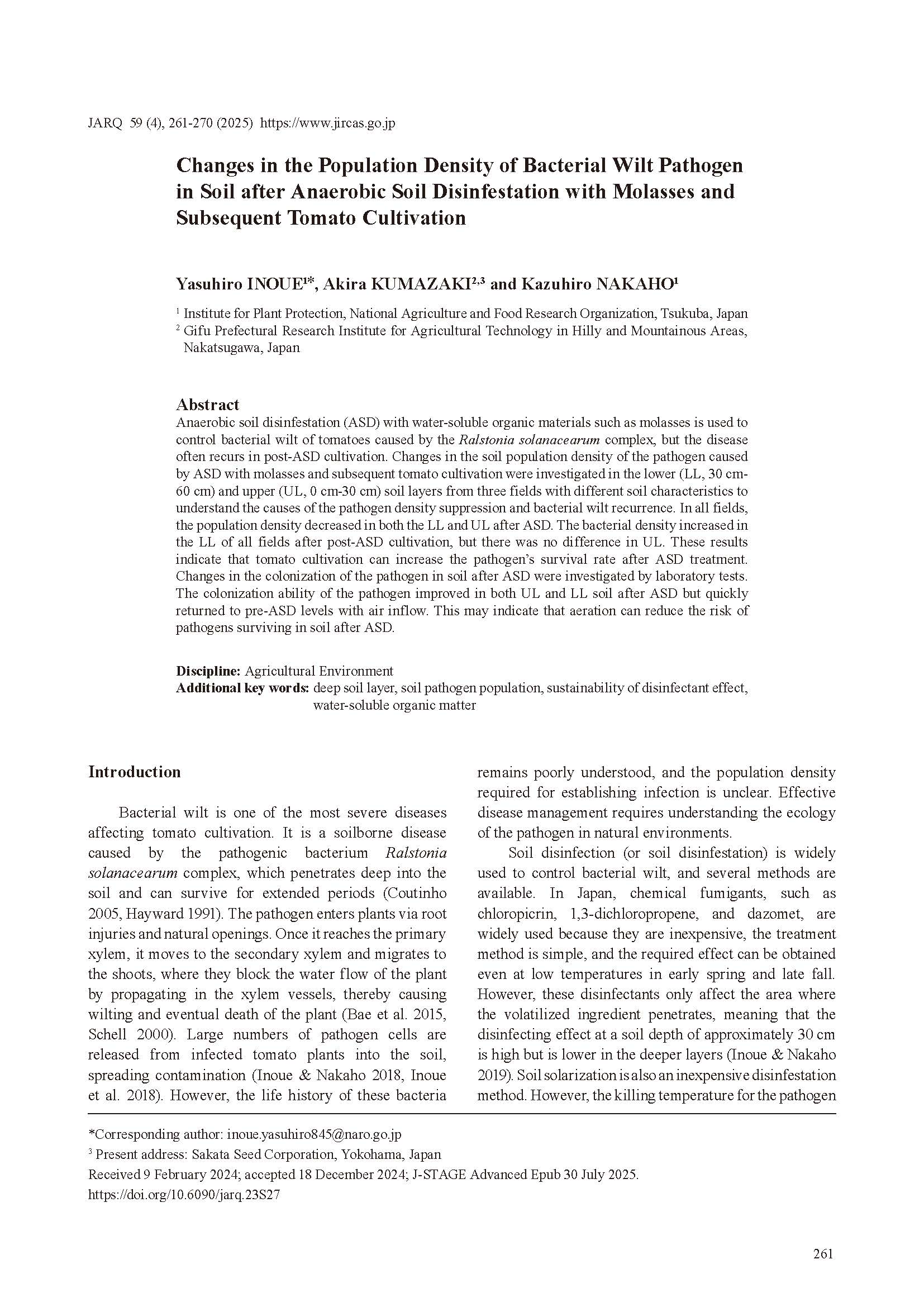Changes in the Population Density of Bacterial Wilt Pathogen in Soil after Anaerobic Soil Disinfestation with Molasses and Subsequent Tomato Cultivation
Japan Agricultural Research Quarterly
| ISSN | 00213551 |
|---|---|
| NII recode ID (NCID) | AA0068709X |

Full text
jarq59-4_261-270.pdf892.15 KB
Anaerobic soil disinfestation (ASD) with water-soluble organic materials such as molasses is used to control bacterial wilt of tomatoes caused by the Ralstonia solanacearum complex, but the disease often recurs in post-ASD cultivation. Changes in the soil population density of the pathogen caused by ASD with molasses and subsequent tomato cultivation were investigated in the lower (LL, 30 cm- 60 cm) and upper (UL, 0 cm-30 cm) soil layers from three fields with different soil characteristics to understand the causes of the pathogen density suppression and bacterial wilt recurrence. In all fields, the population density decreased in both the LL and UL after ASD. The bacterial density increased in the LL of all fields after post-ASD cultivation, but there was no difference in UL. These results indicate that tomato cultivation can increase the pathogen’s survival rate after ASD treatment. Changes in the colonization of the pathogen in soil after ASD were investigated by laboratory tests. The colonization ability of the pathogen improved in both UL and LL soil after ASD but quickly returned to pre-ASD levels with air inflow. This may indicate that aeration can reduce the risk of pathogens surviving in soil after ASD.
| Date of issued | |
|---|---|
| Creator | Yasuhiro INOUE Akira KUMAZAKI Kazuhiro NAKAHO |
| Subject | deep soil layer soil pathogen population sustainability of disinfectant effect water-soluble organic matter |
| Publisher | Japan International Research Center for Agricultural Sciences |
| Received Date | 2024-02-09 |
| Accepted Date | 2024-12-18 |
| Available Online | |
| Volume | 59 |
| Issue | 4 |
| spage | 261 |
| epage | 270 |
| DOI | 10.6090/jarq.23S27 |
| Language | eng |
